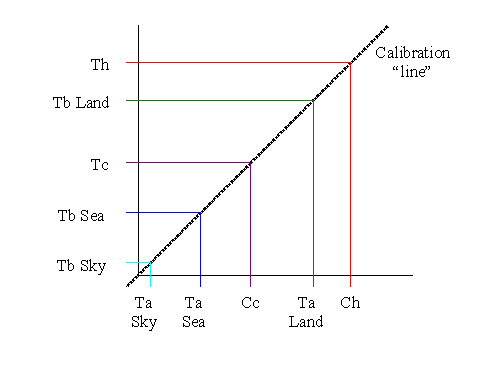|
Theory
Sky Calibration
Often we perform ground-based tests to validate instrument calibration. This involves taking AMPR outdoors on clear dry nights and pointing the reflector to zenith (straight up). We allow the hot load to heat to maximum temperature (~50 C, 323 K) and let the cold load remain at ambient (cold nights are best). This will maximize the load temperature difference, which will provide the best calibration. This is not as good as on the aircraft since ambient cold temperature in the troposphere are well below zero Celsius (-40 C, 233 K on average at 20 km).
If AMPR were on a satellite scanning into deep space the resulting calibrated brightness temperatures at all frequencies would be at/near the cosmic background temperature of ~2.7 Kelvin. Since we have the entire intervening atmospheric column to deal with, accuracy of the calibration is diminished and as a function of frequency. The 10.7 GHz channel is most transparent to the atmosphere, the 85.5 least, so accuracy will additionally diminish from 10 – 85 GHz.
The calibration equation used is:

where,
Tb is the solved brightness temperature (Kelvin),
Th is the hot load temperature (Kelvin),
Tc is the cold load temperature (Kelvin),
Ch is the averaged hot load radiometer counts (volts),
Cc is the averaged cold load radiometer counts (volts),
Ta is the averaged scene radiometer counts (volts).
See the figure below for a graphical representation of the calibration equation with examples for a given frequency X.

|